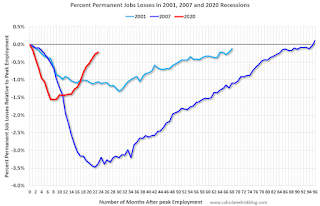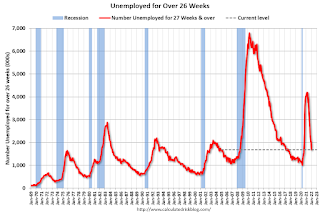https://ift.tt/SWQwcPE
This was a strong report, and the revisions show job growth was stronger – and steadier – over the last year than originally reported.
The headline jobs number in the January employment report was well above expectations, and employment for the previous two months was revised up by 709,000. The participation rate and the employment-population ratio both increased, however the unemployment rate increased to 4.0%.
In January, the year-over-year employment change was 6.61 million jobs.
Permanent Job Losers

This graph shows permanent job losers as a percent of the pre-recession peak in employment through the report today. (ht Joe Weisenthal at Bloomberg).
In January, the number of permanent job losers decreased to 1.630 million from 1.703 million in November.

The prime working age will be key as the economy recovers.
The 25 to 54 participation rate increased in January to 82.0% from 81.9% in December, and the 25 to 54 employment population ratio increased to 79.1% from 79.0% the previous month.
Part Time for Economic Reasons

"The number of persons employed part time for economic reasons, at 3.7 million, continued to trend down over the month. The over-the-year decline of 2.2 million brings this measure to 673,000 below its February 2020 level. These individuals, who would have preferred full-time employment, were working part time because their hours had been reduced or they were unable to find full-time jobs."
The number of persons working part time for economic reasons decreased in January to 3.717 million from 3.929 million in December. This is lower than pre-recession levels.
These workers are included in the alternate measure of labor underutilization (U-6) that decreased to 7.1% from 7.3% in the previous month. This is down from the record high in April 22.9% for this measure since 1994. This measure was at 7.0% in February 2020 (pre-pandemic).
Unemployed over 26 Weeks

According to the BLS, there are 1.691 million workers who have been unemployed for more than 26 weeks and still want a job, down from 2.008 million the previous month.
This does not include all the people that left the labor force.
Summary:
The headline monthly jobs number was well above expectations; and the previous two months were revised up by 709,000 combined. With the revisions – including the benchmark revision – job growth was stronger and steadier over the last year than originally reported.
Financial Services

